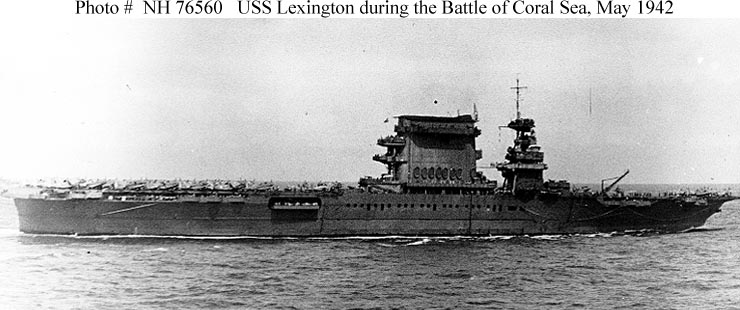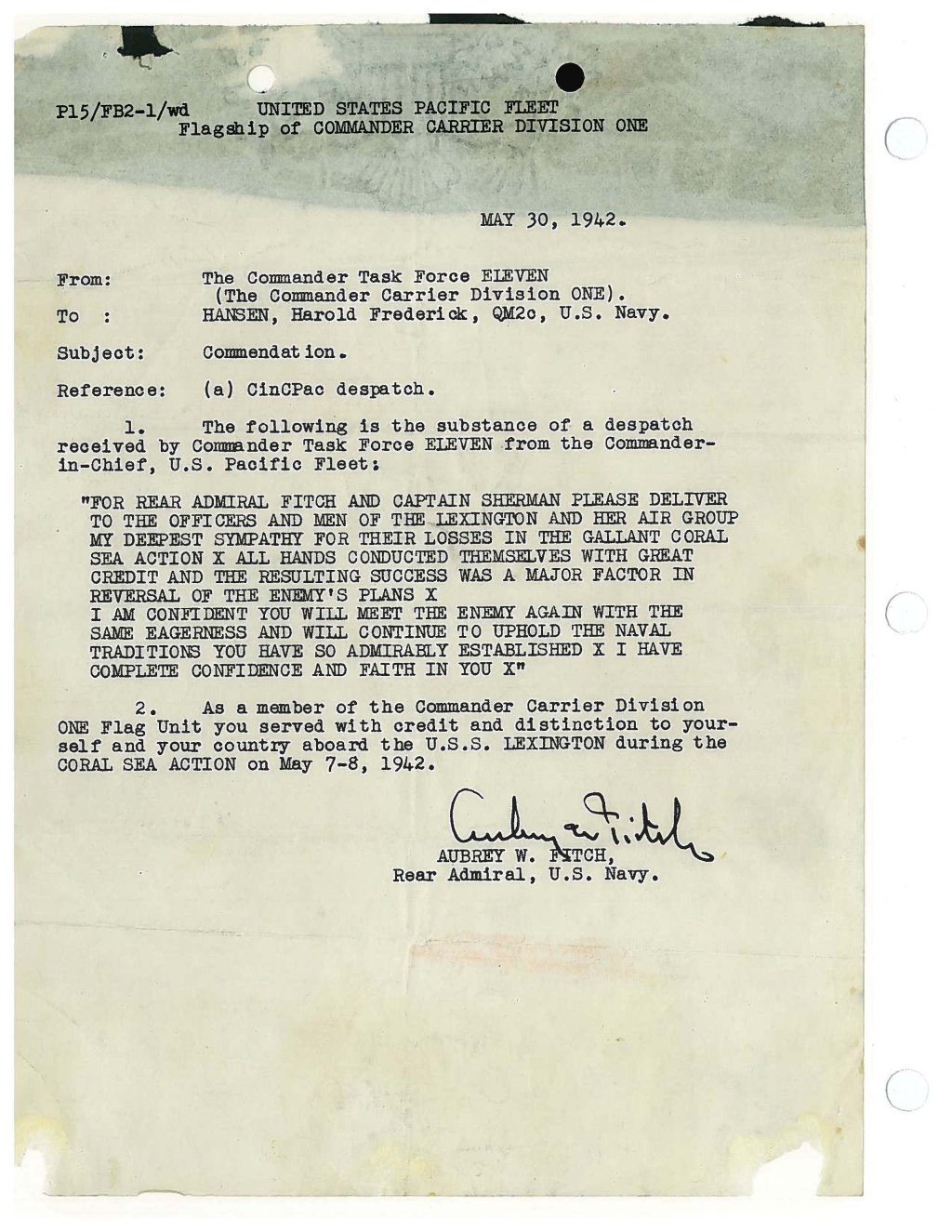
Posted on 03/06/2018 8:28:24 AM PST by C19fan
The wreckage of a United States aircraft carrier, named USS Lexington that was sunk by the Japanese during World War II, was found on the floor of the Coral Sea more than 500 miles off the eastern coast of Australia. The carrier was discovered by a team of explorers led by billionaire Paul Allen, the U.S. Navy confirmed Monday. The ship, which was part of the Battle of the Coral Sea from May 4-8, 1942, was found in a remarkably well-preserved condition. Microsoft co-founder Allen released a statement Monday along with photos and a video of the carrier.
(Excerpt) Read more at msn.com ...
Ping
“Found” in the Coral Sea. Exactly where it sank 76 years ago. Where else would they find it?
Isn’t exactly a GPS fix. It was celestial nav and dead reckoning, in a combat environment. Finding it is a bit more difficult than you imagine.


How many men went down with the ship? Did the captain go down with his ship?
...As the Lexington was struck by multiple Japanese torpedoes and bombs on May 8, 1942, more than 200 Lexington sailors were killed in the fight, and nearby U.S. ships rescued 2,770 of the carrier’s remaining sailors, according to the Navy Times.
Once evacuated, the ship, affectionately known as “Lady Lex,” was torpedoed by the USS Phelps to prevent her capture, according to the Navy Times...
Along with the carrier’s hulk, the team also found at least one Grumman F4F “Wildcat” fighter aircraft and seven Douglas Devastator torpedo planes.
The TBD (Torpedo Bomber Douglas) was the most advanced aircraft of its type when introduced in the mid-1930s; by the time we entered WWII, it was hopelessly obsolete. Delivering a torpedo against an enemy ship required a long, slow approach to the target—it made the Devastators sitting ducks for AAA fire and enemy fighters.
Midway represented the last hurrah for the Devastator; of the more than 40 dispatched against the Japanese fleet, only four made it back to their carriers. Torpedo 8, led by LCDR John Waldron, was almost completely wiped out. Only Ensign George Gay survived, after an unsuccessful run against an Japanese carrier.
Of course, the sacrifice of the torpedo squadrons was not in vain. They forced the Japanese CAP down to the deck and many of the fighters had burned most of their fuel in pursuit of the Devastators. When Max Leslie and Wade McCluskey arrived over the enemy carrier force in their dive bombers, there wasn’t a Zero at altitude, and that “great silver wave” (as Jimmy Thach called it) changed the course of history in less than 15 minutes.
What’s that thing behind the island?
Sorry. I meant “aft of the island.”
Wherever the Space Aliens moved it to.
Smokestack?
Fore and aft of that are tall superstructure with fire control features for the twin turreted 8 inch guns vestiges of it's cruiser design.
If that is the Lexington, what is sitting in Corpus Christi with the name USS Lexington on it? It is CV16.
The Japanese aircraft carrier, Shinano, had the same origin. After construction, she was sunk by USS Archerfish with the final fit out workmen still onboard. Look up the story. Very interesting.
Remember the original design of the Lex was as a world-class (faster, heavier, larger cannon) battlecruiser? (It was arranged below decks like its contemporary battle cruisers (HMS Hood for example) with multiple stacks and widely spaced furnaces and boiler rooms. So the original designers expected lots of room topside between the gun turrets and the fire control masts (no radar then!) for lots of smokestacks, boat cranes, turrets - but no anti-air guns.
When they changed it to a high-speed carrier, they re-routed all the exhaust stack piping into one huge stack to the starboard side. After a few years use, the aviation community found that very large stacks like that caused a lot of air turbulence behind and around the stack, and changed to a side-discharge style with very little turbulence.
But, as one of the first-ever carriers, and one with no catapults and only needing to launch biplanes only slightly faster than the ship itself, this wasn’t too bad a start.
Of course, how silly of me.
I'm so used to aircraft carriers that are nuclear-powered, I didn't think of that. Obviously, an oil-powered CV would have some mighty big stacks.
CV 16 was built during WW-II and was supposed to be named Cabot. If IIRC the shipyard gang asked for it to be named Lexington in honor of the Ship lost at Coral Sea.
Its a neat tour if you have not done it.
https://en.wikipedia.org/wiki/USS_Lexington_(CV-16)
Regards
alfa6 ;>}
Disclaimer: Opinions posted on Free Republic are those of the individual posters and do not necessarily represent the opinion of Free Republic or its management. All materials posted herein are protected by copyright law and the exemption for fair use of copyrighted works.